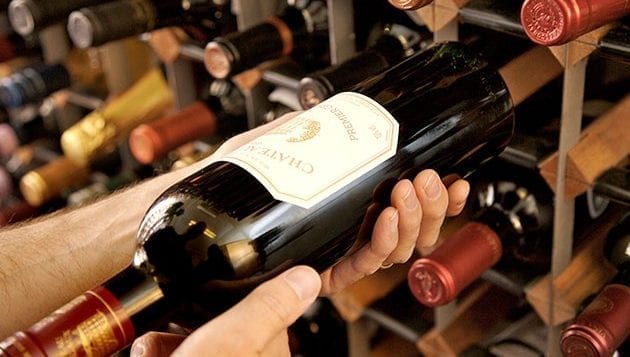By Bob Lipinski
“A man, fallen on hard times, sold his art collection but kept his wine cellar. When asked why he did not sell his wine, he said, ‘A man can live without art, but not without culture.’” — Author Unknown
 Wines are best stored at a temperature of 52 to 55˚F, which is perfect for those who have temperature-controlled cellars or perhaps live in old castles with stone foundations. However, most people live in homes or apartments that are kept at a constant 68 to 72˚F, which creates storage problems.
Wines are best stored at a temperature of 52 to 55˚F, which is perfect for those who have temperature-controlled cellars or perhaps live in old castles with stone foundations. However, most people live in homes or apartments that are kept at a constant 68 to 72˚F, which creates storage problems.
Find the coolest spot in your home or apartment and keep your wines there. Prefabricated wine racks are fine, providing they keep bottles in a horizontal position, so the wine will always stay in contact with the cork.
If you purchase red wines that need aging and you don’t have a perfect wine cellar, these wines will mature at a slightly faster rate at warm temperatures. For example, if the recommended maturity of a red wine is 10 years, keeping it at warmer temperatures will advance the maturity date by maybe a year or so at most.
Most red wines are best enjoyed within four to seven years after the vintage date, while white wines within three years after vintage date. The exception are full-bodied, tannic red wines (including port), which will benefit from aging.
Wine’s longevity can be attributed to many factors, among them higher acidity, high alcohol, carbon dioxide, concentrated fruit, sugar (residual) and tannin, which is an antioxidant.
For the proper storage and aging of wines:
•Ideal storage temperature is 52 to 55°F; no light; 55 to 65 percent humidity; no vibrations. Avoid kitchen, above the refrigerator or garage storage, which can be quite hot.
•Store bottles with corks horizontal to keep the cork wet. Avoid upside down storage, which may lead to leaking corks. Upright storage of “still” wines results in dried corks.
•Storing champagne and sparkling wine upright will keep it fresher and lasting longer.
•An empty corrugated cardboard wine or liquor box turned on its side makes a handy “wine rack.” Drainage tiles and concrete blocks are also ideal.
•Sparkling wines and champagne should be consumed soon after purchasing. The exception are the vintage-dated bottlings, which should be consumed within 10 years of the vintage date.
My aging rules are simple; I’d rather open a bottle of a young wine and say, “It tastes good now but will be better in ‘X’ years” rather than opening a bottle of wine aged for many years and say, “It was probably good several years ago, but now it’s over-the-hill!”
Bob Lipinski is the author of 10 books, including “101: Everything You Need to Know About Whiskey” and “Italian Wine & Cheese Made Simple” (available on Amazon.com). He conducts training seminars on wine, spirits and food and is available for speaking engagements. He can be reached at www.boblipinski.com OR [email protected].





